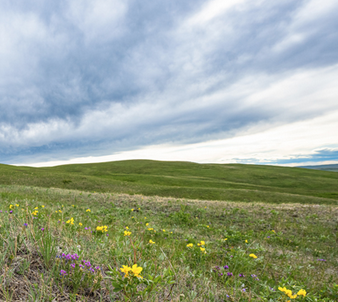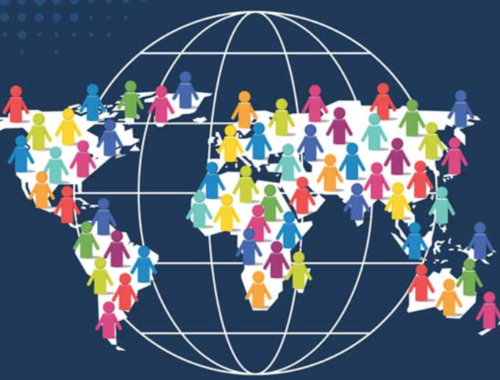The Good News of Increasing Good News Stories

THERE IS MORE GOOD NEWS IN THE WORLD THAN BAD
Recently Maggie was having a conversation with her friend Letitia about good news. Letitia said, “I have noticed there has been an increase in good news stories lately. I don’t know why.” “Maybe,” she mused, “it is because I continually look for good news stories. Maybe the media have discovered people want to hear some good news, not just bad news. Maybe it’s they see there really is a lot of good news.
“Maybe it is because of the lead up to Christmas with its more upbeat take on the world and messages of hope plus the revelry, singing, joy, giving and kindness. I believe GIVING and being kind in particular makes people happy.” Pausing she continued, “Maybe it is the mood created carrying over into the NEW YEAR and a feeling of a new beginning, or just maybe it is because of a new type of journalism, described in the newsletter, ‘REASONS TO BE CHEERFUL,’ as Solutions Journalism.” https://reasonstobecheerful.world/about
Solutions Journalism produces evidence-driven stories that shed light on what’s possible. These stories help readers to overcome feelings of helplessness and hopelessness, by learning positive things are happening.

The editors go on to say solutions-based journalism fails when it is naive and “Pollyannaish,” but it does make one feel better to know that we live in a world where smart people who care are looking for solutions… fortunately there are many.
Regardless of the reasons, here are a few of the many exciting good news happenings I have found recently. Many are in the area of climate change. Here goes:
- I have noted the increasing references to the tremendous strides being made with alternate forms of energy such as solar power. In places it is replacing fossil generated energy because it is less expensive. It is also being used where previously there was no energy being provided, such as in the American west by the Navajo where 30% of the homes have no electricity because it costs $40,000 to connect to the grid. Also in Africa there are many schools with no electricity. One example I know of is in Sierra Leone in a new vocational school outside of Free Town. Morocco too has just gone big on solar power.
2. At the recent COP 28 gathering in Dubai it was agreed by all countries to progressively transition away from fossil fuels in the energy sector by 2050, triple renewable energy capacity, and double the rate of energy efficiency improvements by 2030.
3. The U.S. government has found over the past few years there has been a marked increase in climate action groups working on climate solutions in every region of the U.S. Many of these solutions as a bonus also address social justice and equity issues.
By the way, the U.S. energy sector now employs 8 million people in green energy jobs and experts forecast these jobs will more than make up for losses in the fossil fuel area. The reduction in carbon emissions should prevent upwards of 2 million premature deaths. This increased action is worldwide.
4. The International Sustainability Standards Board has recently established reporting standards for businesses to report on their sustainability and climate-related activity. In Canada, approximately 48% of Canadian companies now report on how they manage climate risk.
To assist businesses The Desjardins Businesses Service Group has established a framework for Companies to develop and report their ESG practices (ENVIROMENTAL, SOCIAL and GOVERNANCE).
ESG is controversial and many companies say they are doing things but are not (known as green washing). Desjardins, however, believes ESG is here to stay and having ESG standards will help provide companies with a competitive advantage.

5. A recent headline in the NATURE CONSERVANCY OF CANADA newsletter reads,“160,000 Reasons to Hope.” The ensuing article went on to say, “Watching the eagles swoop above the endangered prairie grasslands on the 22,000 hectares McIntyre Ranch in Southern Alberta we could practically see hope in both the awesome rejuvenating power of nature and in our host, ranch owner Ralph Thrall III, whose ground-breaking partnership with NCC represents the largest conservation agreement in Canadian history.” The 160,000 refers to the 160,000 hectares spread over 82 projects N.C.C. protected in the past year.
Most of the money was raised from individuals, foundations and corporations. N.C.C. wants to double their impact. This is part of Canada’s and the world’s commitment to having 30% of the world’s lands and waters protected by 2030.
When Letitia read this she thought, “This excites me. We are now about halfway there.”
6. It was recently reported in the “Energy Mix” publication that it is expected the emissions coming from China will begin to decline in 2024.

7. I was amazed to learn drones worldwide are planting 5 seeds a second to counter the CO2 emissions. That’s a lot of trees! Some of the resulting trees will replace the burned-out forests of 2023.
There are also an increased number of planned burns of trees taking place to decrease the dry undergrowth and reduce the number of future forest fires. This practice has been carried out by Indigenous Peoples for many decades but ignored by many forestry authorities.
I was also happy to see:
8. The New York Times reported local newspapers, (who often carry local good news stories), after a steady decline are on the increase. Many are being delivered digitally.
9. U.S. annual deaths from cancer are down 31% since 1991. That’s 3.8 million lives saved.
10. The Globe and Mail’s annual Top 100 Employers list highlighted that employee education is now a common benefit provided by the top employers. They use many criteria to choose the best companies. Here is a short sampling and why they were chosen:

a. Fidelity Canada provides two paid days to employees to volunteer and they match their donations to registered charities. They subsidize outside education up to $10,000 and promote job exchanges.
b. Technology leader ABB promotes their values of courage, care, curiosity and collaboration. They encourage internal job mobility and global skills training.
c. Hatch Engineering is committed to making a better world through a theme of positive change, has mentoring programmes, and are fully engaged in their client’s business. They also promote social events both inside and outside of the company.
d. BASF. Their focus on employee mental health is overseen by a 24-person committee. They provide up to 6 weeks vacation and 17 weeks maternity top up pay. Employees are encouraged to be open and tell their stories to others. “At the start,” says Erika Harris. Occupational Safety and Industrial Hygiene Specialist, “It was important for someone to come forward, tell their story and learn there were no work repercussions; furthermore they were not alone. The result is a sense of trust.”
e. Law Firm Macmillan LLP has a policy of equity, diversity and inclusion. They operate in teams with everyone receiving credit for successes. They pride themselves on creating space for different ways of doing things.

f. There are 95 others in their list: https://www.canadastop100.com/national/
11. I also noticed some wonderful stories about people and animals. The one that touched me the most was about a dog who was hiking with her owner in the Colorado mountains. The owner sadly died, but the dog stayed by her side for 10 weeks until found.
Another recent story on the CBC about a couple in New Brunswick rescuing a young moose stranded on the ice was also touching.
“These are all wonderful stories,” said Maggie. “I feel uplifted!”

Letitia continued, “If you still want more good news stories read the December, blog https://reasonstobecheerful.world/aboutor just look for them in the months ahead…they are all around us.”
Till next time,
Chris Snyder
Climate Optimist
You May Also Like

Getting Along and the Golden Rule
July 31, 2022
Saying Positive and Supportive Things to Others
August 13, 2023